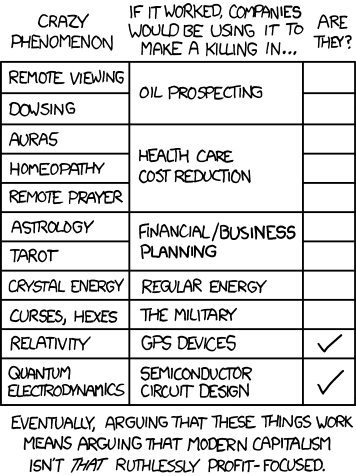Interesting extract on the differences between "science" and "chi" here: http://www.martialdevelopment.com/blog/science-problem-with-chi/. I love the quote that:
Chi theory is an ontology, in which it is pointless to declare one’s belief or disbelief prior to understanding.One particular extract caught my eye:
The differences between a living human being and a corpse are that the former has an EM field and movement (together called “bioenergy”) and neutral chemical acidity, whereas the latter lacks an EM field, does not move, and is highly acidic. Three possible implied explanations for the changes between the living and the dead can be stated in the form of propositions: (1) absence of bioenergy is an effect of altered biochemistry (the Western scientific proposition; (2) altered biochemistry and exhaustion of bioenergy are effects of a third factor; (3) altered biochemistry is an effect of exhaustion of bioenergy (the Chinese scientific proposition).This is effectively talking about cause and effect, with the hypothesis that Western science thinks A causes B and Chinese thinking is that B causes A. Paul Dong seems to argue that only the Chinese version is logically consistent. But to my mind, he seems to be missing a fourth possibility, that it is really a chicken and egg situation and an emergent self reinforcing phenomenon. In this model there would be a feedback relationship and so each one causes the other, and hence both would be correct. Anyway, I should really read the book before commenting further.








 Henry Zhang, an assistant professor of mechanical engineering technology, along with four students, spent several months building a hands-free, two-wheeled, self-balancing scooter based on the principles of Tai Chi, a form of Chinese martial arts that centers on focusing the mind and staying aware of your center of balance.
Henry Zhang, an assistant professor of mechanical engineering technology, along with four students, spent several months building a hands-free, two-wheeled, self-balancing scooter based on the principles of Tai Chi, a form of Chinese martial arts that centers on focusing the mind and staying aware of your center of balance.